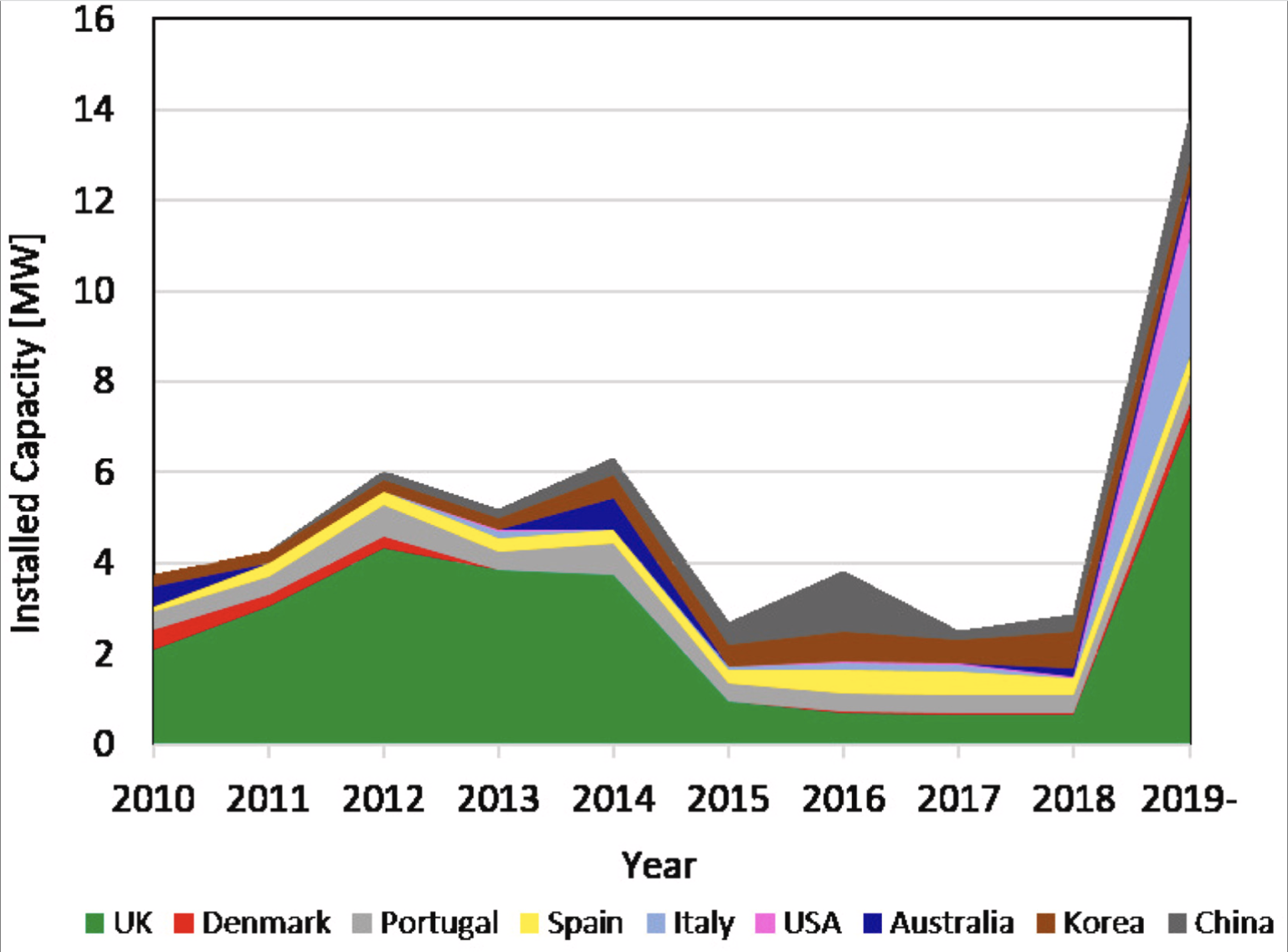Wave energy: can ocean power solve the global energy crisis?

Wave energy might help meet the increasing global electricity demand. Image: Polina Kuzovkova/Unsplash
Listen to the article
- Wave energy could meet all the world’s electricity needs.
- But technologies to harness wave energy are still developing.
- Ocean power generation needs to grow by 33% a year to achieve a net-zero world by 2050, says the International Energy Agency.
Could the waves in our oceans and seas help tackle the global energy crisis?
In theory, yes. Wave energy globally could meet the world’s annual electricity needs, if it was fully harnessed, scientists have estimated.
Indeed, the waves around the United States coasts could provide 66% of the country’s electricity, according to the US Energy Information Administration.
Many countries - including Australia, China, Denmark, Italy, Korea, Portugal, Spain, the United Kingdom and the US - are currently developing wave energy.
But what exactly is it and how does it compare to other renewable energy sources?
What is wave energy?
Waves are formed when wind blows over the surface of water. Devices called wave energy converters capture the energy from waves and turn it into electricity.
Different approaches are used. Some devices sit beneath the water’s surface while others are anchored to the ocean floor. Another technique is to push the waves through a narrow channel, where they power a turbine.
Waves have the highest energy density of renewable energy sources, compared to others like wind, solar, biomass and geothermal. This means waves have the greatest potential to be an important contributor to the world’s “energy mix resilience”, say researchers at the University of Plymouth.
The challenge is that wave energy is far behind in its development compared to other renewable energies.
How is wave energy being developed?
Many countries are developing ocean energy systems. Policies are being introduced to encourage this.
For example, in Australia, the government approved a national Offshore Electricity Infrastructure Bill in 2021. This provides a policy framework for building and operating offshore electricity projects.
In the European Union, islands are expected to play a key role in developing ocean energy technologies as part of an Offshore Renewable Energy Strategy.
What's the World Economic Forum doing about the transition to clean energy?
In the UK, wave energy was first developed in the 1970s and there are active wave energy projects in Scotland, England and Wales. Wave Energy Scotland, a national technology development body backed by the Scottish government, has invested more than $52 million (£40 million) in almost 100 projects since it was set up in 2014.
In Sweden, wave energy company CorPower Ocean says it has built the world’s largest wave energy test rig at its base in Stockholm.
Lots of niche applications for wave energy are helping to pave the way for larger utility-scale projects. These include using wave energy to power oil and gas platforms, marine farming, remote islands, naval bases, oceanography services and luxury resorts.
Can wave energy fix the power crisis?
Fossil fuel shortages are heightening the need for renewable alternatives like wave energy.
A combination of factors is pushing prices for oil, gas and coal higher, leading to a global energy crisis. The world’s recovery from COVID-19 has fuelled demand for energy, but supplies have faltered. Lower coal production in China, low investment in oil production in the US and declining gas production in Europe are among the causes. There have also been global transport bottlenecks.
Now the conflict in Ukraine is pushing oil prices to new highs over supply disruption fears.
Against this backdrop, the reliability of wave energy is a big attraction. While wind and solar energy are unpredictable, waves are reliably frequent and harbour more energy than other renewables.
But while the potential is there for wave energy to solve the energy crisis, there are inevitably hurdles along the way.
Does wave energy have drawbacks?
There are undoubtedly challenges to harnessing this renewable energy. Building and operating wave energy plants is generally expensive.
Cables, turbines and other infrastructure could potentially harm marine life.
And because the plants rely on coastal locations, they may not be able to support whole populations.
Ocean power is not currently on track to play its part in helping the world reach carbon neutrality by 2050, the International Energy Agency (IEA) says in its Ocean Power tracking report.
To achieve this goal, ocean power generation needs to grow an average of 33% a year between 2020 and 2030.
“Marine technologies hold great potential, but additional policy support for energy research, development and demonstration is needed,” the IEA says.
Don't miss any update on this topic
Create a free account and access your personalized content collection with our latest publications and analyses.
License and Republishing
World Economic Forum articles may be republished in accordance with the Creative Commons Attribution-NonCommercial-NoDerivatives 4.0 International Public License, and in accordance with our Terms of Use.
The views expressed in this article are those of the author alone and not the World Economic Forum.
Stay up to date:
Energy Transition
Forum Stories newsletter
Bringing you weekly curated insights and analysis on the global issues that matter.










